Tomb 100

 Tomb 100 is a relatively small tomb without an enclosure. The grave is detached on all sides and does not stand in line with other tombs.
Tomb 100 is a relatively small tomb without an enclosure. The grave is detached on all sides and does not stand in line with other tombs.
It is on a lower level than the surrounding tombs. This was probably caused by a subsidence on this spot.
Above the entrance of the burial chamber, facing the Via Severiana, is an inscription on a marble slab of 35 x 42 cms:
H(uic) M(onumento) D(olus) M(alus) A(besto)
D(is) M(anibus)
SCRIBONIA ATTICE
FECIT SIBI ET M(arco) VLPIO AMERIMNO
CONIVGI ET SCRIBONIAE CALLI
TYCHE MATRI ET DIOCLI ET SVIS
ET LIBERTIS LIBERTABVSQVE POSTE
RISQVE EORVM PRAETER PANARA
TVM ET PROSDOCIA H(oc) M(onumentum) H(eredem) E(exterum) N(on) S(equetur)
May this monument be protected against intentional evil! Scribonia Attice has built this monument for herself and for Marcus Ulpius Amerimnus, her husband, for Scribonia Callityche, her mother, for Diocles, and for her family, and for her freed slaves, and the descendants, with the exception of Panaratus and Prosdocia. The monument cannot be inherited by strangers.


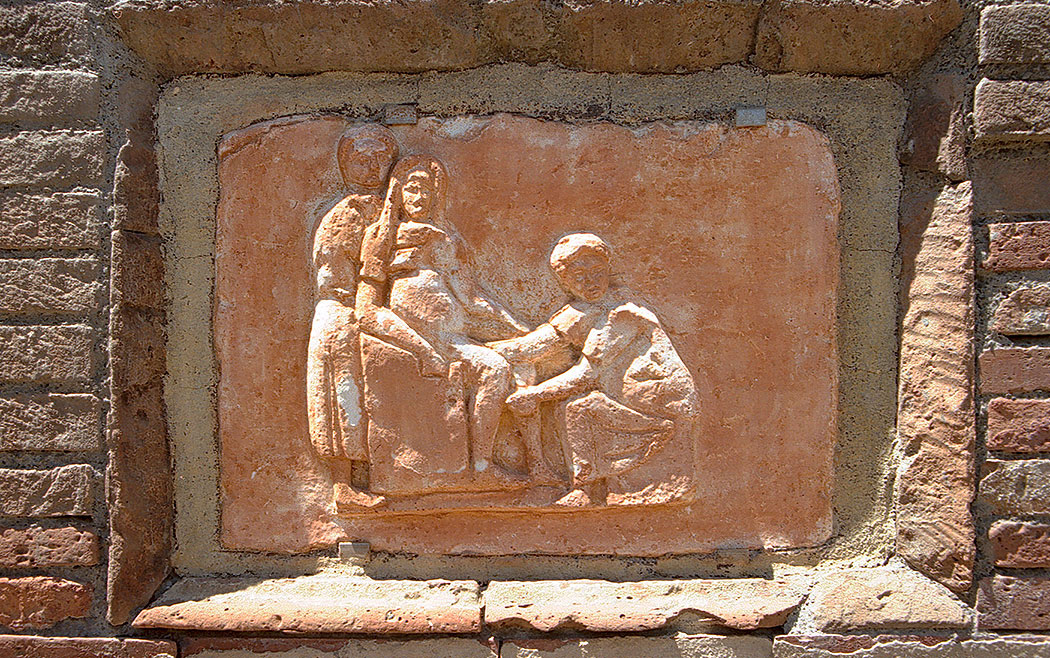
On the other relief we see a midwife in action. The expectant mother sits nude on a chair while she is held by a third woman. In front of her, on a low stool, sits the midwife. These were probably the professions of Marcus Ulpius Amerimnus and Scribonia Attice.
The burial chamber was mainly used for interring urns. Later formae for inhumation were placed under the floor. These were covered by marble slabs.
In front of tomb 100 were two benches of a biclinium. They are not visible anymore.
Tomb 100 dates from about 140 AD.

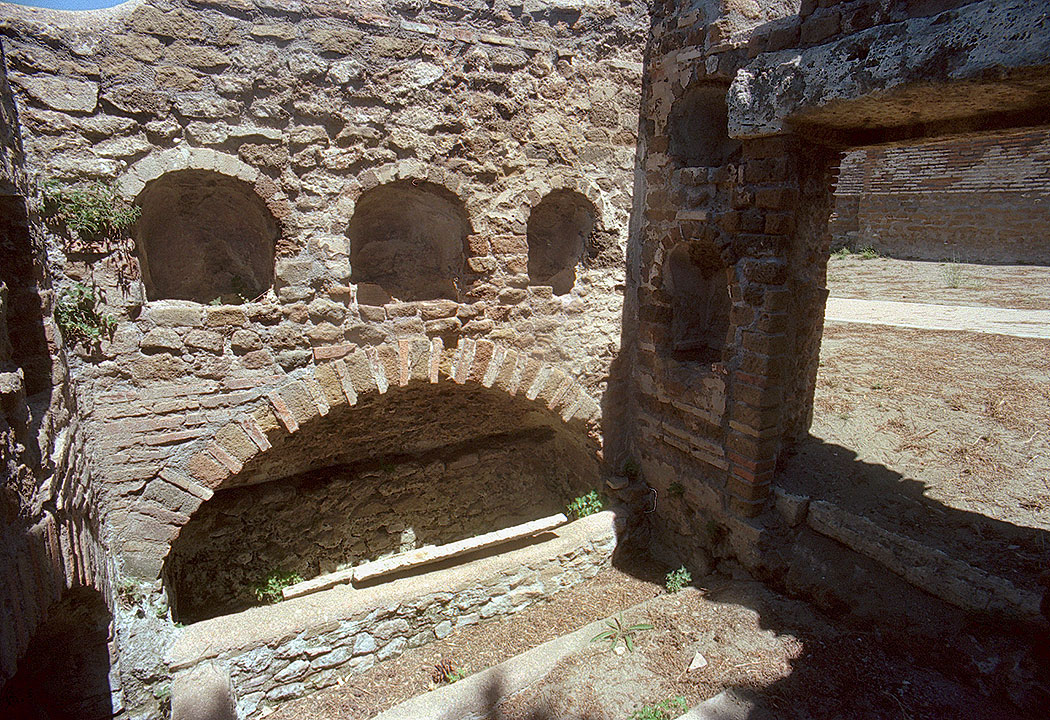
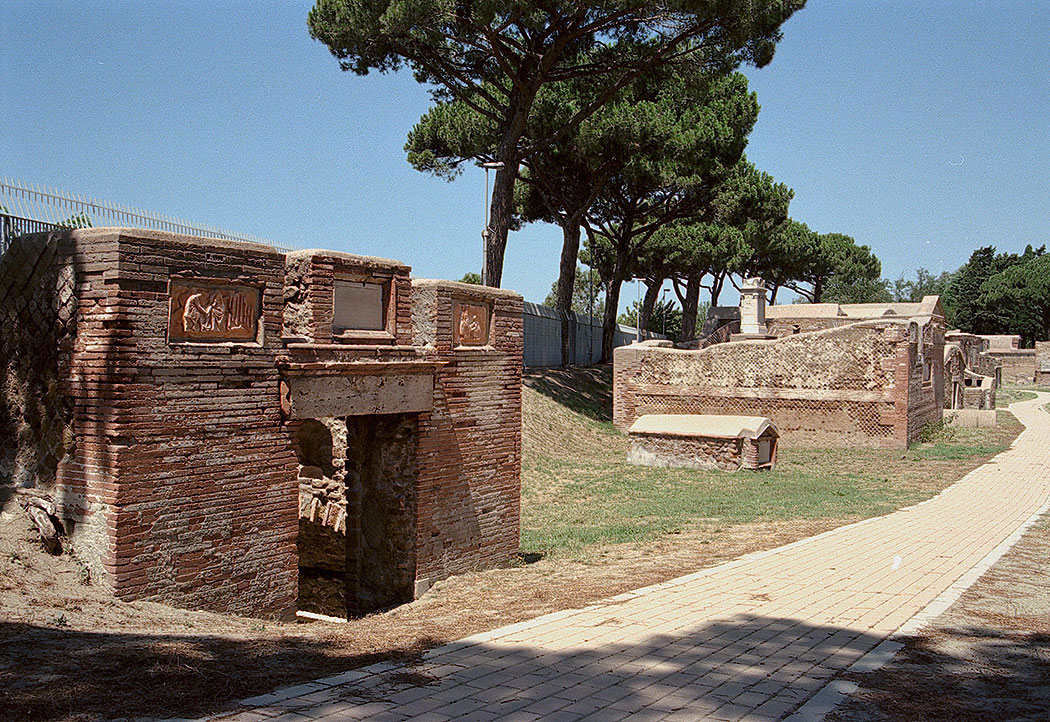
- Sources
- Russel Meigs - Roman Ostia, At the Clarendon Press 1973
- Guido Calza - Necropoli nell'Isola Sacra'(1940)
- Dr. Jan Theo Bakker.
- Hilding Thylander - Inscriptions du port d'Ostie (Lund C W K Gleerup 1952).
- Ida Baldassarre, Irene Bragantini, Chiara Morselli and Franc Taglietti - Necropoli di Porto, Isola Sacra (Roma 1996).
- Notes
- 1: In tomb 97 there have been found, among other bones, the thigh-bone of a man on which clearly marks of the use of a surgical saw can be seen. The leg belonged to a rather tall man from the second century AD. The man must still have lived for several months because the wound was already healing. From the ancient writer Celsus (first century AD) we know that amputations were common in antiquity. - Roberto Macchiarelli Museo Preistorico e Ethnografico L. Pigorini, Roma
Leptiminus (Inglese)
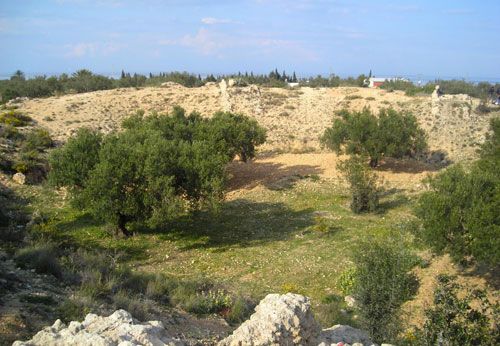
At the site of present-day Lamta on Tunisia's east coast, there was already a port city named Leptis Minor ....
Leggi tutto...Diritto romano del commercio marittimo (inglese)

Roman law is the finest monument that Rome bequeathed to Western Europe....
Leggi tutto...Sullecthum (Salakta) Inglese

In the Sahel, in the Tunisian province of Madhia, we find by the sea the small town of Salakta....
Leggi tutto...Colonia Julia ad Turrem Libisonis (Inglese)

.....probably founded by Julius Ceasar around 46 BC, was located in the north-west of Sardinia.
Leggi tutto...

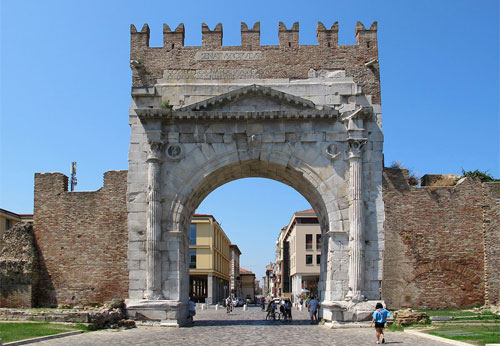
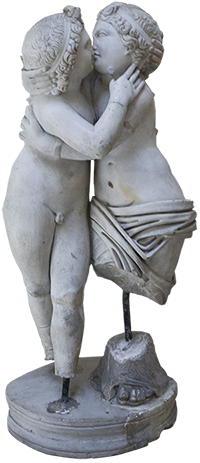 We are committed to providing versions of our articles and interviews in several languages, but our first language is English.
We are committed to providing versions of our articles and interviews in several languages, but our first language is English.